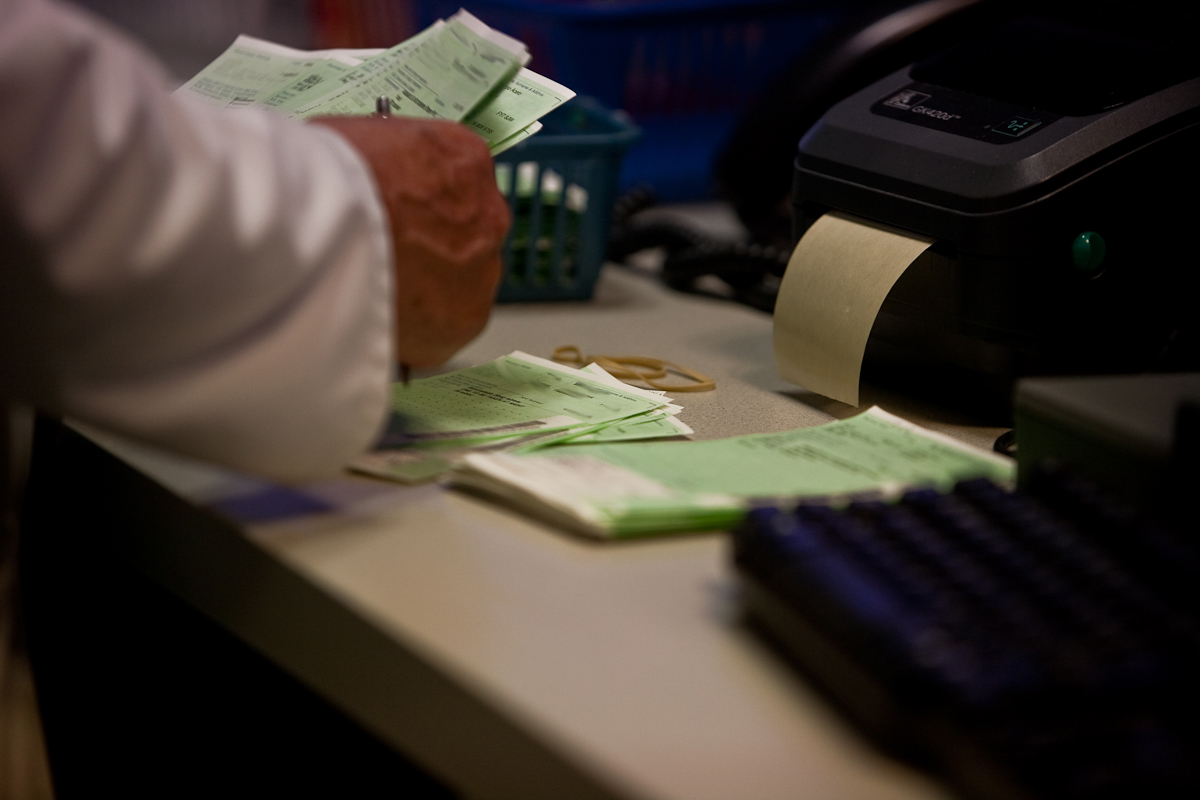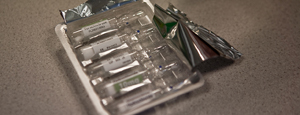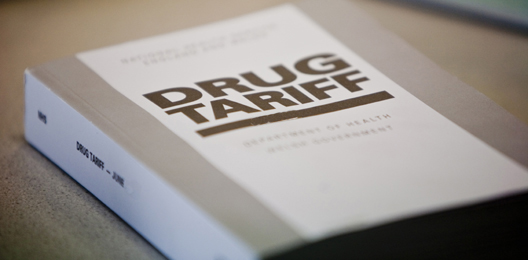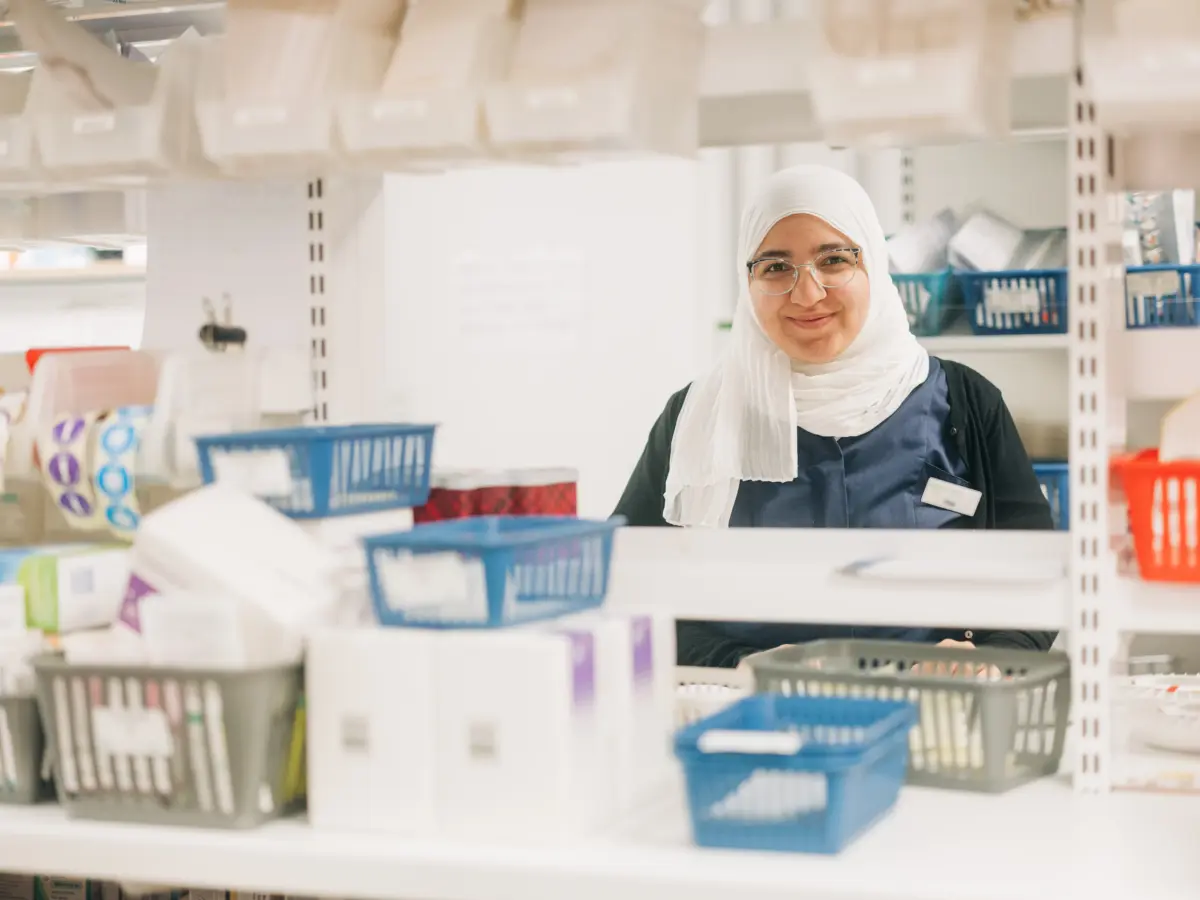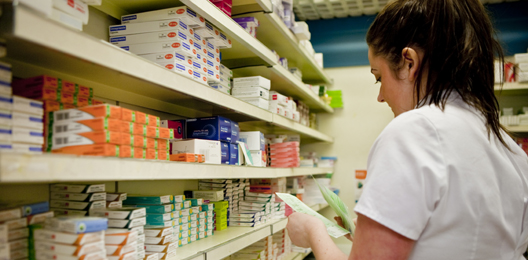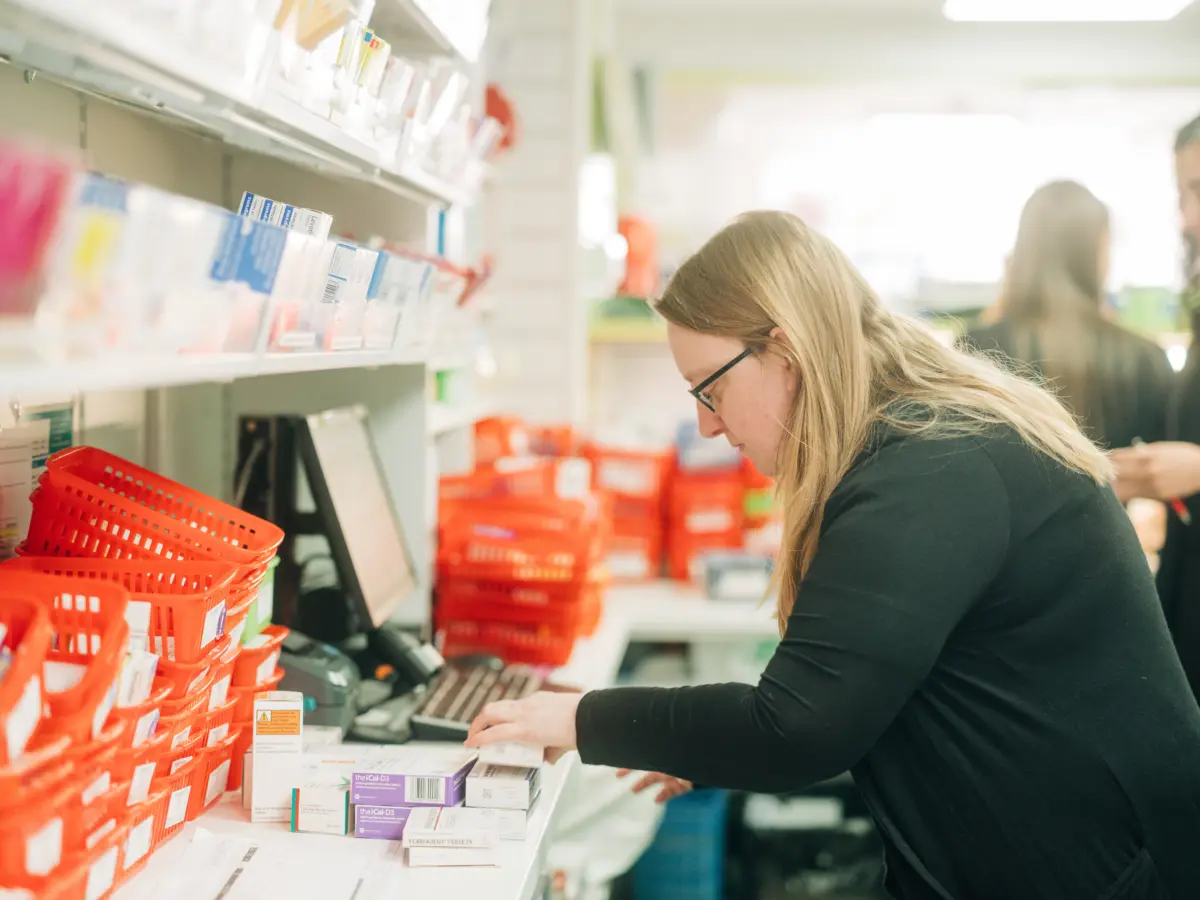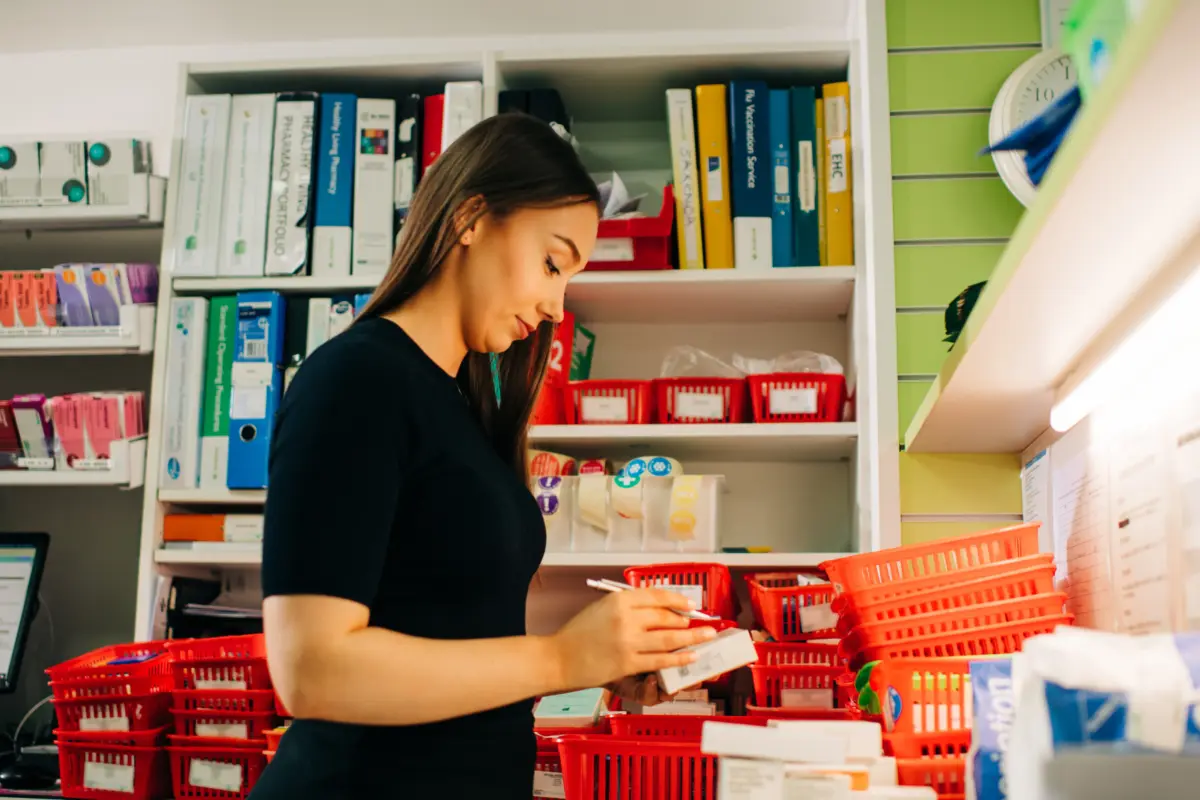Medicinal products
Published on: 17th June 2013 | Updated on: 2nd August 2022
Medicinal products are items which are not considered to be appliances and include drugs, foods, toiletries and cosmetics. Please note that unlicensed specials and imports have separate arrangements which are covered on this page.
Firstly, the item needs to be identified as either a medicinal product or a medical device and the easiest way to tell the difference is to look for a CE mark which signifies that the item is a medical device. The CE mark can normally be found on the packaging of a device, on the instruction leaflet and on the device itself (where practical).
If there is no CE mark, then you need to check the product is not listed in Part XVIIIA of the Drug Tariff (drugs, medicines and other substances that may not be ordered under the NHS). If it is not listed in Part XVIIIA, then it is allowed on an FP10.
If there is a CE mark, then please read our Appliances section.
Key points to consider
- If the product appears in Part XVIIIA of the Drug Tariff (drugs, medicines and other substances that may not be ordered under the NHS).
- Whether the item requires the ‘SLS’ endorsement.
- The prescriber has given all the required details for the item they wish to be dispensed: i.e. form, strength, quantity. If not, the prescription may need to be returned to be amended appropriately. See our FAQs below for details of what to do when presented with an incomplete prescription.
- If there is internet access in the pharmacy, the Drug Tariff can be viewed online. This can help to identify whether a product is listed in Part XVIIIA or requires the ‘SLS’ endorsement more quickly.
- It is also important to note that whilst an item might be prescribable on the NHS, there may be local prescribing guidance in place about the appropriateness of prescribing that item, e.g. anti-malarial drugs.
For support on whether a particular product is allowed on an NHS prescription, the Community Pharmacy England Dispensing and Supply Team will be happy to help (0203 1220 810 or email info@cpe.org.uk).
In the majority of scenarios, a pharmacy contractor will be paid for dispensing the exact quantity prescribed. Payment will be pro-rata based on pack sizes recognised by the NHS Business Services Authority.
A medicinal product is granted special container status in cases where it is not practical to split an original pack, for example where the product is sterile or hygroscopic.
Quantity reimbursement table
Classification of product |
How it will be reimbursed |
How to endorse quantity dispensed |
| Medicinal products listed in Part VIIIA (except special containers and items requiring reconstitution) | If the quantity of a prescribed item is equal to or a multiple of a listed Drug Tariff pack size, reimbursement will be based on that pack size. Otherwise the pack size will be assessed in the following order using: (i) the next largest pack size to the quantity prescribed OR (ii) the largest pack size available. Reimbursement will be pro-rata against the appropriate pack size. |
The pack size only needs to be endorsed for Part VIIIA Category C products where there are multiple pack sizes listed. |
| Medicinal products outside of Part VIIIA (except special containers and items requiring reconstitution) | If the quantity of a prescribed item is equal to or a multiple of a pack size the NHSBSA has on their database, reimbursement will be based on that pack size.Otherwise the pack size will be assessed in the following order using: (i) the next largest pack size to the quantity prescribed OR (ii) the largest pack size available. Reimbursement will be pro-rata against the appropriate pack size. |
The pack size only needs to be endorsed where there are multiple pack sizes available. If the product is less common, the net price of that pack before discount and ex VAT should also be endorsed. |
| Unlicensed Specials and Imports listed in Part VIIIB (except special containers)
|
The minimum quantity pack listed will be reimbursed for any amount prescribed up to the minimum quantity. Subsequent quantities will be reimbursed at the additional price per ml/g/tab/cap up to the total quantity prescribed. | No quantity endorsement required. |
| Unlicensed Specials and Imports outside of Part VIIIB (except special containers) | Reimbursement will be calculated pro rata from the declared invoice price per pack. | Amount dispensed over pack size used and invoice price per pack size used to dispense from (minus any discount or rebate), e.g.:30/30 £90/pack. Other endorsements are required for non-Part VIIIB items; please check the page opposite for full details. |
| Special containers | Where the quantity ordered by the prescriber does not coincide with that of an original pack, the contractor shall supply in the special container(s) nearest to the quantity ordered, unless there is an overriding clinical need to dispense the exact amount. Reimbursement is automatically based on the nearest number of special containers required to meet the prescription. If exactly half-way between two packs, contractors should round down. |
Contractors are required to endorse the prescription form accordingly: amount dispensed over pack size used. |
| Items requiring reconstitution
|
When the quantity reconstituted from an original pack or packs is unavoidably greater than the quantity ordered and it has not been possible for the contractor to use the remainder for or towards supplying against another prescription, reimbursement will automatically be based on the nearest pack or number of packs necessary to cover the total quantity ordered. | Contractors are required to endorse the prescription form accordingly: amount dispensed over pack size used. |
| Appliances (all those listed in Part IX) | If the quantity of a prescribed item is equal to or a multiple of a listed pack size, reimbursement will be based on that pack size.Otherwise the pack size will be assessed from those listed in Part IX of the Drug Tariff. Reimbursement will be pro rata against the appropriate pack size. | The pack size only needs to be endorsed where there are multiple pack sizes listed in Part IX. Please note: if there is more than one pack size available for an appliance but not all pack sizes appear in Part IX, the prescription must be dispensed from and clearly endorsed as one of the Drug Tariff listed pack sizes. |
What happens if quantity is ordered by directions only?
This can be calculated to discover the exact quantity and will be paid according. Please note that a month is taken to be 28 days unless indicated otherwise.
If the product is eye drops which have been prescribed by dosage instructions, e.g. two drops twice a day in left eye for two months, then the pharmacist will have to use their professional judgement to decide on how many bottles would be appropriate to meet those requirements. Reimbursement would be based on endorsement
What to do when the required quantity has not been specified on the prescription
Missing quantity (NOT Schedule 2 and 3 Controlled Drugs):
- Confirm the required quantity with the prescriber, endorse the quantity with the letters “PC” (initial and date) in the endorsement column. Reimbursement will be based on the contractor’s endorsement.
- If unsuccessful in contacting the prescriber, consider supplying enough for 5 days’ treatment and endorse the prescription with the letters “PNC” (initial and date) in the endorsement column.
Missing quantity for Schedule 2 and 3 Controlled Drugs (now including Temazepam):
- If lacking total quantity in words or figures, can dispense if prescription is believed to be genuine and the intention is clear. Amend prescription indelibly so it has total quantity in words and figures. The pharmacist should sign the prescription.
- If lacking total quantity in both words and figures, the prescription must be returned to the prescriber for amendment. The prescription cannot be dispensed until amended.
A list of drugs, medicines and other substances that may not be ordered under the NHS can be found in Schedule 1 to the NHS (General Medical Services Contracts) (Prescription of Drugs etc.) Regulations 2004 which is reproduced in Part XVIIIA of the Drug Tariff. This is the list of medicinal products which cannot be prescribed on the NHS.
Any medicinal product not in Part XVIIIA can be prescribed on the NHS. For example, whisky is not Part XVIIIA, so a prescription for this item would be passed for payment by NHS Prescription Services. The prescriber may however be questioned by their CCG about the appropriateness of prescribing this item at NHS expense.
As a general rule, if a proprietary (branded) product is listed in Part XVIIIA, it cannot be prescribed on the NHS. The only exception to this is:
If the prescription has been written generically and the generic product is not listed in Part XVIIIA AND if the generic name has an ‘Official Title’, that is, the drug appears as the head of a monograph in the European Pharmacopoeia (EP), the British Pharmacopoeia (BP), the British National Formulary (BNF), the International Pharmacopoeia, the Dental Practitioners’ Formulary or is included in the Cumulative List of Recommended International Non-proprietary Names.
In cases where a Part XVIIIA listed proprietary product contains more than one ingredient, the combination product must have an official title.
For example:
|
Brand Name |
Generic Name |
‘Official Title’ |
Comments |
| Laxoberal | Sodium picosulphate | Recommended International Non-proprietary Name (RiNN) | Because it has a monograph, Laxoberal could be dispensed if the prescription was written generically. |
| Regaine | Minoxidil cream, lotion, ointment, solution | Recommended International Non-proprietary Name (RiNN) | Both the brand and its generic name appear in Part XVIIIA so this product cannot be prescribed either way. |
When a prescription for a Part XVIIIA listed product is received, pharmacy staff have a number of options open to them:
a) the prescription could be returned to the prescriber so that an alternative product can be prescribed; OR
b) a private prescription could be issued (note, an NHS prescription cannot be used as a private prescription and a new prescription, which isn’t on an FP10, must be issued); OR
c) if the item has GSL or P status, the product could be sold to the patient over the counter instead.
Please note that there are now separate lists in Part XVIIIB of the Drug Tariff for English and Welsh prescribers to follow.
The ‘Selected List’ can be found in Schedule 2 of the NHS (General Medical Services Contracts) (Prescription of Drugs etc.) Regulations 2004 which is reproduced in Part XVIIIB of the Drug Tariff. The items included on the list may only be prescribed for the patient groups and for the purpose listed in the Tariff. For example, Niferex Elixir 30ml Paediatric Dropper Bottle can only be prescribed to infants born prematurely for prophylaxis in the treatment of iron deficiency.
Prescribers must endorse prescriptions for these products ‘SLS’. If the ‘SLS’ endorsement is missing, the prescription should not be dispensed and will not be passed for payment by NHS Prescription Services. Pharmacy staff cannot make the SLS endorsement themselves.
Part XV of the Drug Tariff is known as the ‘Borderline Substances’ list. In certain conditions, some foods and toiletry preparations have the characteristics of drugs. A board known as the Advisory Committee on Borderline Substances (ACBS) advises on the circumstances in which these products may be regarded as drugs. Part XV of the Drug Tariff is split into two lists:
List A is an alphabetical index of the approved borderline products and the conditions they may be prescribed for.
List B is an alphabetical index of medical conditions and related approved products for managing those conditions.
Prescribers should endorse prescriptions with the endorsement ‘ACBS’ if they are issuing the prescription in accordance with the Committee’s advice.
If the ACBS endorsement is missing for a product on the borderline substances list, pharmacy contractors can still dispense the prescription and it will be passed for payment by NHS Prescription Services. However the prescriber may be asked by their CCG to justify why the product has been dispensed at NHS expense. Pharmacy staff should not add the ACBS endorsement.
Q. I have a prescription which states Ensure Plus milkshake style liquid 220ml (Flavour Not Specified) in the prescribing line. Can I dispense multiple flavours and claim for multiple dispensing fees?
No, as the Ensure Plus has been prescribed with an unspecified flavour rather than a direction to supply multiple flavours.
Only where the prescription specifically orders mixed, assorted or various flavours, and several flavours of the same preparation are dispensed and endorsed, will you receive dispensing fees equivalent to the total number of different flavours supplied.
The ‘flavour not specified’ listing is actually a way for prescribers to order a product which is available in multiple flavours, without specifying at the time of prescribing precisely which flavour is required. This enables the patient or the dispenser to decide which (single) flavour may be appropriate.
For electronic prescriptions, the prescriber can select ‘flavour not specified’ and then the Assorted Flavours (AF) option on their system. Multiple dispensing fees will only be paid on electronic prescriptions if the AF option has been ticked by the prescriber.
For more information on prescriptions requesting multiple flavours see our Multiple flavours factsheet.
Q. I have received a prescription for ’10ml Chloramphenicol 0.5% Eye Drops, use once daily in both eyes’. How many bottles will I be paid for dispensing?
The NHSBSA will only reimburse you for the quantity ordered (in this case one 10ml bottle). Where in the professional opinion of the pharmacist it is in the patient’s interest to have two bottles supplied, the prescriber should be contacted in order to amend the prescription accordingly before dispensing.
Q. I have a prescription for 8 Caverject Dual Chamber, how many should I dispense?
This product is supplied in a pack containing 2 pre-filled syringes and the manufacturer has confirmed that each pre-filled syringe is a dual chamber item. If a prescription was received for 8 Caverject Dual Chamber items, you would be reimbursed for 8 pre-filled syringes (4 packs).


